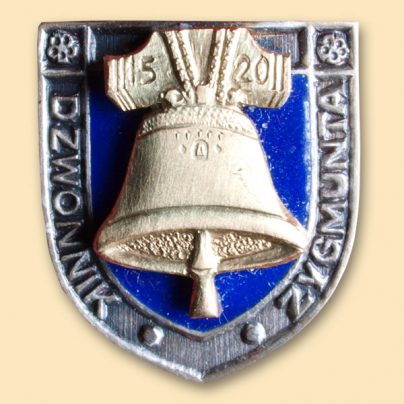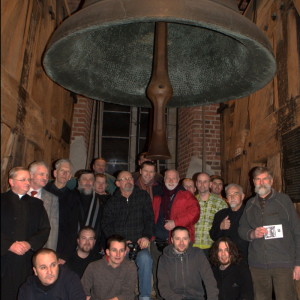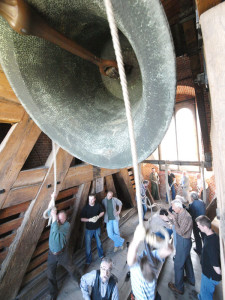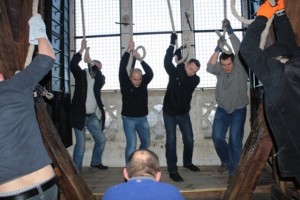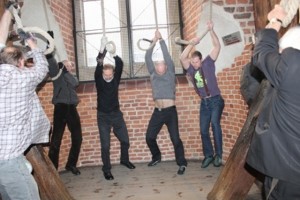Since its first ringing to this day, the Sigismund Bell has been operated by a group of bell-ringers. Initially, in the 16th century, bell-ringers were cathedral servants, later, for a few centuries, members of the Cracow carpenter’s guild, and then the staff working at Wawel. Since the mid-20th century, the Sigismund Bell has been put in motion by bell-ringers who represent various circles and professions. Currently there are around 30 such bell-ringers.
- The badge Sigismund Bell- Ringer
The oldest of the present bell-ringers have performed this task for over fifty years, while the youngest have practiced for just a few years. This honorary function is generally passed from father to son. Bell-ringing is considered to be liturgical service. It requires great effort. Bell-ringers need to be focused, as the ropes used to operate the bell move up and down at a great speed. To ensure the proper angle of the colossus weighing over 12 tonnes, twelve bell-ringers need to work at the same time.
- Bell-ringers of the Sigismund Bell
- Bell-ringers of the Sigismund Bell
The regular ringing time is six minutes. On some occasions, such as processions, the Sigismund Bell rings for longer. The Wawel Cathedral Parish Priest is the Head of the bell-ringers. The badge “Sigismund Bell-Ringer” confirms the status of a bell-ringer which is received after three years of practice and having a record of at least fifty ringing sessions. The honorary badge of “Sigismund Bell-Ringer” was awarded to the Archbishop Metropolitan of Cracow, Cardinal Stanisław Dziwisz. The holder of the unique sheer-gold honorary badge was Pope John Paul II.
- Bell-ringers of the Sigismund Bell
- Bell-ringers of the Sigismund Bell

